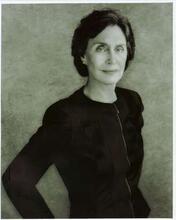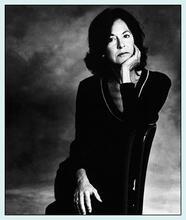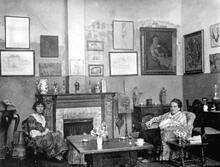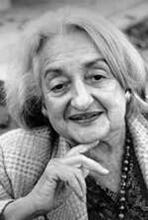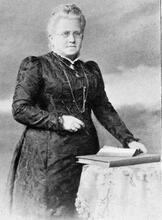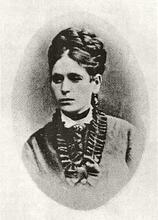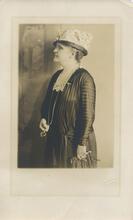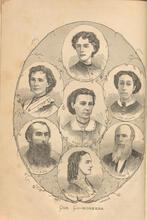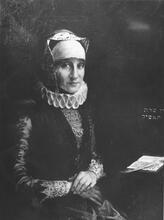Haskalah Literature: Portrayal of Women
The image of women in Haskalah literature reflects the relationship between the sexes in eighteenth- and nineteenth-century Ashkenazi Jewish society and European culture. But Haskalah writers wished to shape new patterns of male-female relationships among their reading public; to change, at least partly, the attitude of men towards women; and to ‘improve’ women’s conduct within the home and community. The authors sought to transmit a good many of these messages through female Jewish literary characters in poetry and prose. They also sought to influence reality, educate women, change their status in society and the family, and ‘repair’ the relationship between men and women. Haskalah writers saw their target audience as readers of the two languages then prevalent in Ashkenazi society: Hebrew and Yiddish.
To a large extent, the image of women in Jewish Enlightenment; European movement during the 1770sHaskalah literature reflects the relationship between the sexes in Ashkenazi Jewish society. Authors, poets, and playwrights who wrote in the spirit of the Haskalah movement were affected, in no small measure, by the prevailing attitude toward women in eighteenth- and nineteenth-century European culture. But the female characters that they created, whether in Hebrew or Yiddish (the two languages of Haskalah literature), were not simply lifted “as is” from external literary models nor constructed in accordance with some ideological master plan borrowed directly from the European Enlightenment. Most of the extant works from the Haskalah period (it should be recalled that many manuscripts by female/sing.: Member of the Haskalah movement.maskil never saw print) were written by men. These writers treated their female characters in much the same way that they treated the other aspects of Jewish reality with which they grappled: On the one hand, they labored to create an idealized example of the “perfect” woman, the future product of the Haskalah movement’s endeavor to educate and improve, while on the other, they sought to reveal the “true” image of woman in all its ugliness—as both a victim of the degeneration of traditional Ashkenazi society and at the same time, a hostile, threatening element that stood in the way of the male female/sing.: Member of the Haskalah movement.maskil striving to escape the tribulations of that same society.
Haskalah Audience
In addition to creating female literary characters, the maskilim also sought, through their writing, to influence reality, to educate women, to change their status in society and the family, and to “repair” the relationship between men and women. They saw their target audience as readers of the two languages then prevalent in Ashkenazi society: Hebrew and Yiddish. The vast majority of readers of Hebrew were men, whereas Yiddish literature was written explicitly for “simple folk and women.” Accordingly, there was a difference between the intended readership in each of the two languages. Although a sizeable proportion of Jewish men in Ashkenazi society did not read Hebrew texts, Haskalah literature in this language was intended for male readers. The writers of the Haskalah movement were in fact adhering to the cultural/gender attitudes of traditional society whereby texts in the holy tongue (Bible, Codification of basic Jewish Oral Law; edited and arranged by R. Judah ha-Nasi c. 200 C.E.Mishnah, Lit. "teaching," "study," or "learning." A compilation of the commentary and discussions of the amora'im on the Mishnah. When not specified, "Talmud" refers to the Babylonian Talmud.Talmud and the like) were intended solely for males. Yiddish literature, by contrast, was aimed at the uneducated classes in Jewish male society as well as the female audience, who, according to the linguistic divisions of bilingual Ashkenazi society, were readers of Yiddish. But while traditional Yiddish literature was intended to transmit to the Jewish people at large something of the cultural treasure that had hitherto been the purview solely of the male scholarly elite, the maskilim wrote in Yiddish in order to convey new knowledge to the uneducated “plain folk” and women, to inculcate non-traditional values and implant hitherto unknown social attitudes and opinions. Among other things, the maskilim wished to shape new patterns of male-female relationships among their reading public; to change, at least partly, the attitude of men towards women; and to “improve” women’s conduct within the home and community. The authors sought to transmit a good many of these messages through female Jewish literary characters in poetry and prose.
Rational Men and Irrational Women
The ideal female figure in Haskalah literature was consistent with the accepted viewpoints on morals, society, and economics, and with the level of medical knowledge in Central Europe of the eighteenth century. The figure of the threatening woman, which so repulsed the Jewish maskilim, was essentially a negative photographic image of what Jewish males were seeking to produce through suitable education. In the proper scheme of things, as seen by the maskilim, the male was the dominant figure—a being who acted rationally, controlled his desires and successfully managed his feelings and emotions. The woman, by contrast, was revealed as a creature motivated by irrational urges, who must be “reined in” by a man and kept under close supervision. The maskilim felt that, without male protection, women were easy prey to delusional dreamers, religious fanatics, or perverts. Since the Haskalah authors saw hasidism—a new religious movement that had taken numerous Jewish communities in Eastern Europe by storm—as an anti-rationalistic stream that appealed to the primitive impulses in man’s soul, they associated the negative qualities of hasidism with the foolishness of the traditional woman.
Thus, for example, the writer Joseph Perl (1773–1839) from Tarnopol in Galicia portrayed women as the preferred audience for the delusions of the hasidic zaddikim (righteous sages). According to Perl, an irrational religious movement that was opposed to the normal social order and encouraged immorality and licentiousness found an avid audience among women, who could be restrained only by masculine wisdom (that is, the wisdom of the enlightened Western male). In one of the letters that make up his biting anti-hasidic satire Megaleh Temirim (Revealer of Secrets, 1819) a hasid recounts how he tried to convince a misnaged (anti-hasidic) scholar to believe in the miracles of the hasidic saints by giving his wife the book In Praise of the Ba’al Shem Tov in Yiddish: “And I also spoke to her several times and told her some of the miracles performed by our Holy Rabbi. She began to try to persuade him [her husband] to journey to our Holy Rabbi, and he would refuse, saying … that he didn’t want to send them a gift of money, much less travel to them. And I said to his wife that I saw in him [her husband] a spark of apikorsut (heresy). And she said that she also saw some apikorsut in him.”
The argument that women were irrational by nature, subscribed to wholeheartedly by the writers of the Haskalah movement, gained credence as an accepted part of medical and scientific discourse in Europe. From the moralistic, ethical plane, the contrast between men and women shifted to the field of anatomical and physiological research. During the European Enlightenment, the dissimilarities between males and females were explained by means of medical theories that drew a connection between the sexual behavior of men and women (including differences in male and female sexual satisfaction) and the social and economic functioning of the sexes. Even in the nineteenth century, women’s sexual longings and the female desire to achieve sexual satisfaction were seen by several doctors as upsetting the physical equilibrium and harming the social order. In certain medical approaches, disease, madness, prostitution and poverty were associated with the unbridled sexual lust of the woman.
These perceptions also filtered into the cultural world of the Jewish maskilim. The latter saw women, in the words of Shmuel Feiner, as “the embodiment of inferior desires, in conflict with masculine rationality, and a threat to the Haskalah.” Already in the earliest Haskalah-era comedies in Yiddish, written by Isaac Euchel (1756–1804) and Aaron Wolfsohn Halle (1754–1835), we encounter frivolous young women who are easily seduced by the earthly delights offered them by hedonistic men. They are restored to “the straight and narrow” by the male maskil, who subdues their feminine outbursts of emotion and their immoderate desire through the power of male logic. These comedies deal with the influence of German acculturation on the Jewish family, presenting the bourgeois ideal of male dominance in the face of the moral decay caused (in the opinion of the Haskalah writers) by the illogical combination of the fanaticism of traditional society with the permissiveness of the urban environment where many Jews were now residing. In Wolfsohn Halle’s play Leichtsinn und Fremmelei (Frivolousness and Sanctimony, 1796), the flighty Etkhen reads sentimental novels, is an ardent follower of fashion trends, and spends her time at theaters and concerts lusting after Christian men. She flees her father’s house with a Prussian nobleman and eventually descends into prostitution. The maskil Marcus, a man of moderate views whose character represents bourgeois order, comes to the young woman’s aid, returns her to her father’s home, and takes her as his wife. The frivolous daughter becomes a responsible, sober housewife.
Critique of “Domineering” Women
The maskilim of Eastern Europe (specifically, Austrian Galicia and the Russian Empire’s “Pale of Settlement”) also adopted the desired model of the female figure from the German bourgeoisie. In his play Dos Shterntikhl (The Headdress, 1861), Israel Axenfeld (1787–1866) portrays a young male entrepreneur whose money and sexual potency give him the advantage over a gullible woman belonging to a conservative world destined for oblivion. Mekhl, who escapes the feudal economy of Ukraine and makes his fortune in business as a representative of the new capitalistic order, wins the heart of Sheyntse, whose entire focus is an expensive head covering—an outdated piece of attire that represents economic stagnation and social backwardness. The male here is the agent of the West, and the woman the “native” who is being stripped of her original culture by the dynamic male. Of the connection between gender, economics, and the Haskalah movement’s criticism of traditional society in Eastern Europe, literary critic Dan Miron writes: “The feminine-womanly is identified here with the old, the conservative; the progressive, dynamic element is embodied by the young, nimble male, who knows how to take action.”
The desired world order, according to the ethos that the maskilim sought to impose on Jewish society, was supposed to rectify what was seen as a grave social distortion. In East European reality, women frequently filled economic roles that, according to German bourgeois criteria, were intended for males. Women engaged in commerce, sold items at fairs and in the marketplace and were far from upholding the biblical verse: “All the glory of the daughter of the king is within.” Within the nuclear family of simple lay folk in the cities and shtetls, women were often the decision makers in all practical matters. The mother-in-law ruled over the young groom (who came to live with his wife’s family) with an iron fist, interfering in his affairs and even expressing her opinion on the most intimate matters. This phenomenon of powerful women controlling the lives of emasculated Jewish males was condemned by the writers of the Haskalah as yet another expression of the distortion of traditional society. What is more, women were presented as an obstacle to the liberation of men from the yoke of traditional society, as enemies of the Haskalah and as agents of religious conservatism.
In several of his works, Shalom Jacob Abramowitsch (1835–1917), better known as Mendele Mokher Seforim, created characters of strong, domineering women who clip the wings of those males who seek to deviate from the ways of the Jewish (Yiddish) Small-town Jewish community in Eastern Europe.shtetl and go out into the larger world. Thus, for example, in his Hebrew novel Ha-Avot ve-ha-Banim (Fathers and Sons; first edition, 1862; second edition, 1868), the Jewish mother gets rid of her son’s Haskalah books and seeks the help of a soothsayer to save him from the influence of the spirits of modernity. In his Yiddish work Masa’ot Binyamin ha-Shelishi (Travels of Benjamin the Third, Yiddish 1877), which later also appeared in a Hebrew version (1896), the women are rooted in real life and support their husbands financially. The husbands are in effect under their control and live in fear of them. Binyamin, who is a Jewish Don Quixote of sorts, lives in a world of imagination. He finds a companion in a man known to all as Senderl the Housewife. These two “feminine” males, the embodiment of the weakness and detachment of the Jews of Eastern Europe, essentially live as a couple, both of them trying to escape the “masculine” women who rule their lives. Thus, for example, we see Zelda, Binyamin’s wife, in the thoughts of this oppressed male: “His wife is coming! No, not coming but rushing toward him swift as an eagle. Soon she’ll be here, falling upon him in a rage, spending her fury and her harsh spirit, and pulling him to his house weeping and wailing. A dark day awaits him.” The women are also the ones who prevent the men from journeying to the Land of Israel.
The autobiographies of the East European maskilim shed light on the hardships of the Jewish male, who saw himself as a victim of feminine domination. It was perhaps the Vilna maskil Mordecai Aaron Guenzburg (1795–1846) who articulated most clearly the Jewish male’s fear of women who were not under his control. In his autobiography, Aviezer, Guenzburg describes the relationships in his family, in which two women—his wife and his mother-in-law—in effect ruled his life. This state of affairs, which Guenzburg explained as a distortion of the marital arrangement that had been customary in Ashkenazi Jewish society for generations, was the direct opposite of the ideal state of marriage in the spirit of the Haskalah. The weak male was subject to sexual and economic domination by two women. He was the victim of an early marriage, which was the norm in Ashkenazi society, and was harmed by the custom known as kest, according to which the young groom spent the first few years of his married life in the home of his mother-in-law. Because he married before reaching puberty, while his spouse had already passed this stage, the mature female demanded sexual satisfaction from her young husband. In the picturesque language of Guenzburg: “My wife was blessed [by nature] with the gifts of a man, with strength, power and swiftness so that the fruits of love had ripened for her before their time. And at thirteen years of age, she was [as] a learned heifer in the desires of a man, and [nature] crowned me with sloth and weakness such that in my fourteenth year I was as an unlearned calf in bringing forth a woman’s desire in the love of the flesh. Thus, the masculine female caused shame to this feminine male in the ways of the world.” His wife was the initiator and the active partner in their sex life, while he became impotent.
Virtually identical experiences emerge from the autobiographical essay of Moses Leib Lilienblum (1843–1910), entitled “Hat’ot Ne’urim” (Sins of Youth, 1876). Obviously, there is also another side to these descriptions of male impotence—that of the woman. The latter suffered from the lack of a common language with the male, whose spiritual world was like a closed book to her. At the same time, she bore the burden of the family’s livelihood and in many instances was also abandoned by the husband, who moved to the big city, leaving her behind with young children.
Haskalah Poetry
Judah Leib Gordon (1831–1892), one of the greatest Hebrew-language poets of the Haskalah, created idealized female figures who fell victim to the social and economic distortions of the environment in which they were raised (“Aharit Simhah Tugah” [The End of Joy is Sorrow]). Until recently, the character of Bat-Shua, protagonist of the poem “Kozo shel Yod” (The Tip on Top of the Yod), was considered by scholars of Hebrew literature to be the outstanding example of support for the liberation of women on the part of the members of the Haskalah movement in general, and Gordon in particular. Thus, for example, literary critic Fishel Lachower wrote of “Kozo shel Yod”: “In a lyrical, effusive manner, the poet enters the soul of the heroine, describing her joy and pain … In this way, the poet can trace all the deepest inclinations of the heroine and describe them in detail and, at the same time, also pour out his heart and his fury at life, which does not conform to the ideal [emphasis in the original] and lacks freedom, love, brotherhood, morals. For this reason, the poet took as his hero the woman, who in Jewish life of one or two generations ago, was the more subjugated sex.”
Indeed, the Haskalah poet sought to free the Jewish woman from the bonds of the traditional social order in Eastern Europe. In his poetry, Gordon offers harsh and pointed criticism of the status of women in East European Jewish society. All her life, from birth to death, the Jewish woman is the maidservant of the male. Her role in the community and the family is to provide for the man, satisfy his needs, and raise his children: “But the life of the Jewess is servitude unending/From her post she never ventures, yon or hither/Conceive, give birth, nurse, wean/Bake, cook, and before your time, wither.” Men look upon her with contempt; she is excluded from their cultural world, and prevented from understanding the religious and cultural language of her people: “Better not to know the language of your forefathers/Because they have barred you from the house of your God./And now you will not hear the ‘blessing’ of those who hate you/‘Who has not made them a woman,’ daily they shall pray.”
But in fact Gordon, like the male maskilim cited earlier, observes Bat-Shua from the perspective of a man who has adopted the values of the European bourgeoisie. While the heroine of his poem is the victim of an oppressive social order that displays no interest in her inner world, her desires, her emotions, and her needs as woman, her liberation from the bondage of traditional Jewish male society lies in her delivery from the hands of the “traditional” male to those of the “maskil” male. From one form of servitude, she is expected to pass to another—enslavement to the values of Central European bourgeois society—in which the male’s domination of her life is perhaps even greater than in the traditional Jewish society that the poet condemns. Such a woman merited the term eshet hen (a woman of grace), while her counterpart, who failed to meet the male demand to limit herself to the kitchen, the bourgeois salon and the marriage bed, was labeled a “domineering whore.”
The New Woman
A woman who had already cast off the shackles of the traditional social order but had not adopted the bourgeois family values preached by the authors of the Haskalah movement threatened the world of the Jewish male even more than did her predecessors of the previous generation. For she represented an amalgamation of all the evils that had permitted the dominance of women and afforded them a practical status superior to that of the male in traditional society, together with new ideas that threatened the formal status of the male as well. To the threatening figures of the sensual, demanding wife and the domineering mother-in-law, who tormented the male in traditional Polish Jewish society, were added, beginning in the 1860s, the figure of the radical revolutionary woman who rebelled against domination by the males in her life.
The liberation of women from this new enslavement—that of the bourgeois world so desirable to the Haskalah writers—is connected with a different stage in the history of the Haskalah movement: the transition from the moderate to the radical Haskalah. Beginning in the 1860s—the period of the reforms of Tsar Alexander II (r. 1855–1881) and the Polish revolt against Russian rule—a new female figure was added to the gallery of women characters in Jewish literature: the radical young woman, daughter of the “new generation.” Her emergence was sparked by the appearance of a new type of woman on the East European scene—a woman who no longer acceded to the authority of her parents from the old generation, or to her husband, but who likewise did not take upon herself the bourgeois family values so dear to the hearts of the Haskalah writers. At the same time, a fresh generation of young maskilim adopted a new female figure drawn from radical Russian and Polish literature.
The first hint of the emergence of this young woman can already be found in the figure of Rachel, heroine of the aforementioned novel, Ha-Avot ve-ha-Banim (published originally under the title Na’omi). Rachel does not unquestioningly accept the groom chosen for her by her parents. She also dissociates herself, at least partially, from the hasidic cultural environment in which she was raised. “I searched her heart,” a young Jewish maskil says of her, “and I saw that she detests those who speak folly and despises their image. All of their customs and processions distress her, and she will not allow her heart free rein among those that stand still but rather among those who march to the spirit of the times.” Rachel marries a young maskil of the new generation out of love, and raises a family with him that is utterly different from the one in which she herself grew up.
But the figure of Rachel contains only a few elements of the modern female figure that the radical Haskalah sought to create based on the ideals of the modernist streams of Russian and Polish society. This new woman was deserving of full emancipation and a marriage of two partners, equal in their rights and their obligations. In the 1860s and 1870s, radical maskilim made reference to such women in their political tracts, but created virtually no literary characters of this type. One exception is the love story between Fishke the Lame and Beilke the Beggarwoman in Fishke der Krumer by Mendele Mokher Seforim (first Yiddish edition, 1869; expanded edition, 1888; published in Hebrew as Sefer ha-Kabzanim, 1907–1909), one of the most important literary examples of the creation of a female character in the spirit of the radical Haskalah. This is a love story of two victims of the socioeconomic order in Russian Jewish society. The hero and heroine manage to escape the two factors that pervert a loving relationship in Jewish society: the lust for money and the lust for sex. In the words of Dan Miron, their love story is not only a Jewish love story but “a tale of the salvaging of the human aspect in male-female relations.” Here, Mendele Mokher Seforim totally undermines the notion of male domination through monetary wealth and sexual potency—the heart’s desire of the writers of the Haskalah movement—thereby freeing the Jewish male and his partner from the dual bonds of the old world of tradition and the new world of the bourgeoisie.
Hebrew:
Bartal, Israel. “‘Potency’ and ‘Impotence’: Between Tradition and the Haskalah.” In Sexuality and the Family in History, edited by Israel Bartal and Isaiah Gafni, 225–237. Jerusalem: 1998.
Cohen, Tova. Ha-ahat Ahuva ve-ha-ahat Snuah. Jerusalem: 2002.
Feiner, Shmuel. “The Modern Jewish Woman: Test Case in the Relationship between the Haskalah and Modernity.” In Sexuality and the Family in History, edited by Israel Bartal and Isaiah Gafni, 253–303. Jerusalem: 1998.
Miron, Dan. “The Pearl Headdress, or the Usefulness of Fabrication: The Reality Principle in the Novel ‘Dos Shterntikhl’ by Israel Axenfeld.” In Bein Hazon le-Emet: Nizanei ha-Roman ha-Ivri ve-ha-Yidi ba-Me’ah ha-Tesha-Esreh, 177–216. Jerusalem: 1979.
Shmeruk, Chone. “The Significant Name: Mordechai Marcus—The Literary Metamorphosis of a Social Ideal.” Tarbiz (1960): 76–98.
Zalkin, Mordechai. “The Maskilic Family and Its Role in the Development of the Jewish Haskalah Movement in Eastern Europe.” In Sexuality and the Family in History, edited by Israel Bartal and Isaiah Gafni, 239–251. Jerusalem: 1998.
English:
Biale, David. Eros and the Jews. New York: 1992
Litvak, Olga. Haskalah: The Romantic Movement in Judaism. New Brunswick, NJ: Rutgers University Press, 2012.
Parush, Iris. Reading Jewish Women: Marginality and Modernization in Nineteenth-Century Eastern European Jewish Society. Waltham, Mass: 2004.
Perl, Joseph. Revealer of Secrets: The First Hebrew Novel. Trans. Dov Taylor. Boulder, CO: 1997.
Seidman, Naomi. The Marriage Plot: Or How Jews Fell in Love with Love, and With Literature. Stanford: Stanford University Press, 2016.

